How to choose a wheelchair
We offer 4 general types of wheelchairs: “Standard Type,” “Module-Based Type,” “Reclining and Tilt Types” and “MP series / active wheelchair”. In addition to these general types, our wheelchairs come in a variety of colors with different designs or subtypes depending on the use: compact type, lightweight type, active/sports type and a type for children. First, let’s look at the different types before selecting the right wheelchair for you.
Standard Type
This standard wheelchair is for home use or for use in facilities, such as hospitals, and it is the most frequently used type. Users can select a manual wheelchair to move by themselves using their hands or feet. Or, users can select a transport wheelchair fitted with grips on the rear for a caregiver to push.
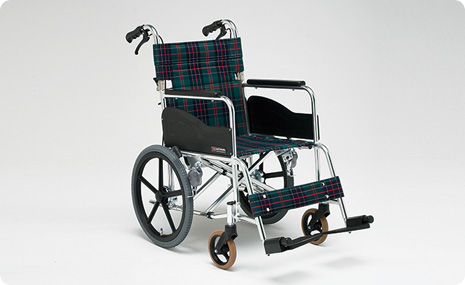
Module-Based Type
This type is available to make it easy for users to order a customized wheelchair by selecting pre-established parts from our product lineup, such as specific seats, tires or rims. The user can order a wheelchair that fits his or her body type and add the features that he or she wants, but at a much more reasonable price when compared to fully custom built wheelchairs.
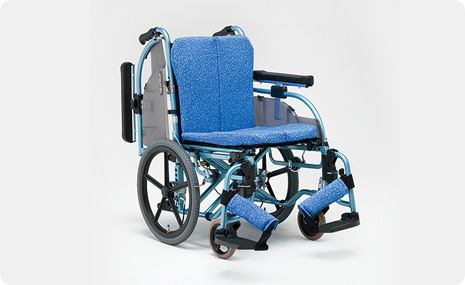
Reclining and Tilt Types
Our Standard Type wheelchair is designed for users who have difficulty holding a seated posture. Manual and transport types are available. The backrest part of the wheelchair reclines back on our reclining design, and the angle of the backrest as well as the seat can be adjusted on our tilt design.
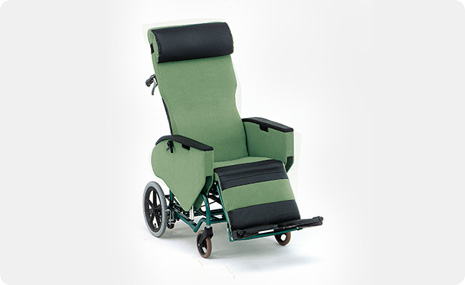
MP Series / Active wheelchair
MP series is the customized wheelchairs for active users. Users can move to the many places with very light wheelchairs and play sports such as basketball, tennis.
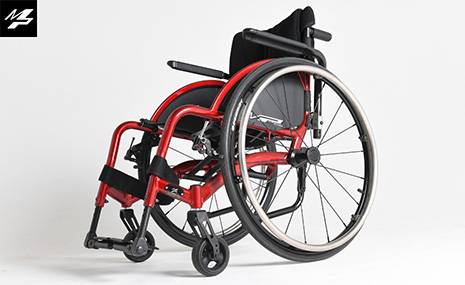
It is important that the wheelchair fits the body type and size of the user. For example, just like shoes, it must fit the user comfortably without being too big or too small. Let’s check the following points.
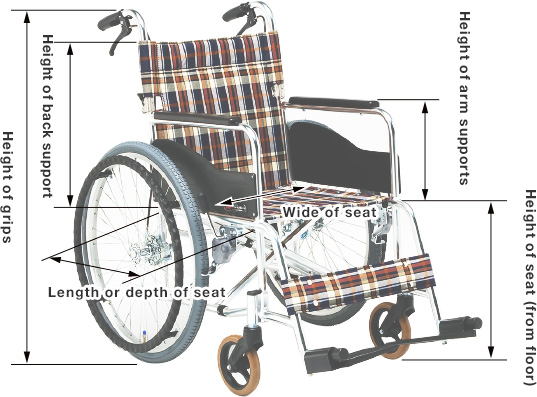
Height of seat (from floor)
The user can sit and stand comfortably at a height that is about 5 cm taller than the user’s lower legs. However, 1 to 2 cm should be added to the height for persons using their feet to move. In addition, we recommend a slightly higher seat height for users with a limited range of motion on their knee joint.
*Remember to take into account the thickness of a seat cushion if one is being used.
Seat width (inner width between arm support pipes)
We recommend a width that allows for enough room so that both palms of your hands can fit beside your buttocks. The width of your buttocks plus an additional 4 to 5 cm can be used as a guide for the ideal seat width.
Height of grip
We recommend a position where the caregiver slightly bends his or her elbows, at the point where he or she flexes (generally the height of the bellybutton on the caregiver).
Height of arm support
We recommend 2 to 3 cm taller than the height of the elbow when it is bent at a 90 degree angle relative to the seat. A height that is not too high or too low should be selected.
*Remember to take into account the thickness of a seat cushion if one is being used.
Foot support length
We recommend a position that is 5 cm or higher from the floor so that the user’s thighs are slightly resting on the seat. There should not be too much space between the seat and thighs, nor should the thighs be pressed down onto the seat too much.
Back support
For manual wheelchairs, we recommend a height that extends from the seat to the base of the scapula. The height that extends from the seat to the base of the scapula plus an additional 4 to 5 cm is the ideal back support height.
MP Series / Active wheelchair
Our Sports Type wheelchair features a stylish design and lightweight body and is one of our most popular series.


